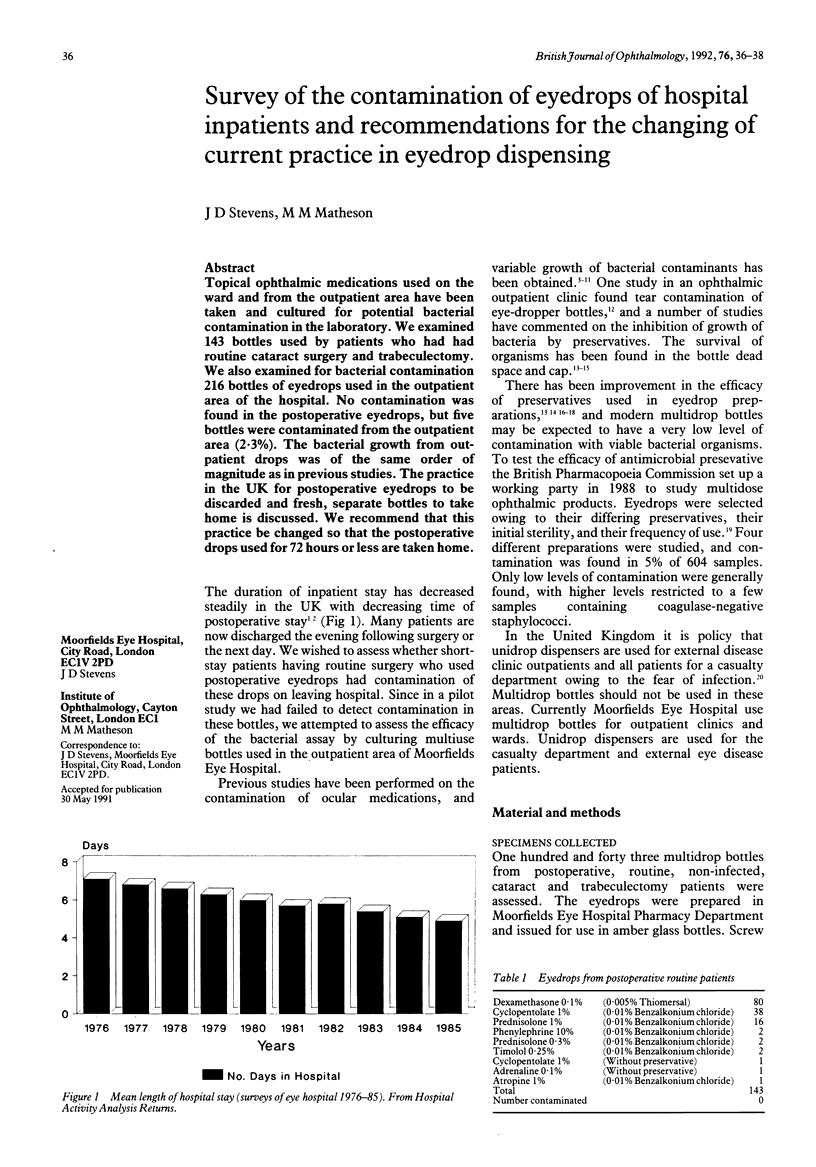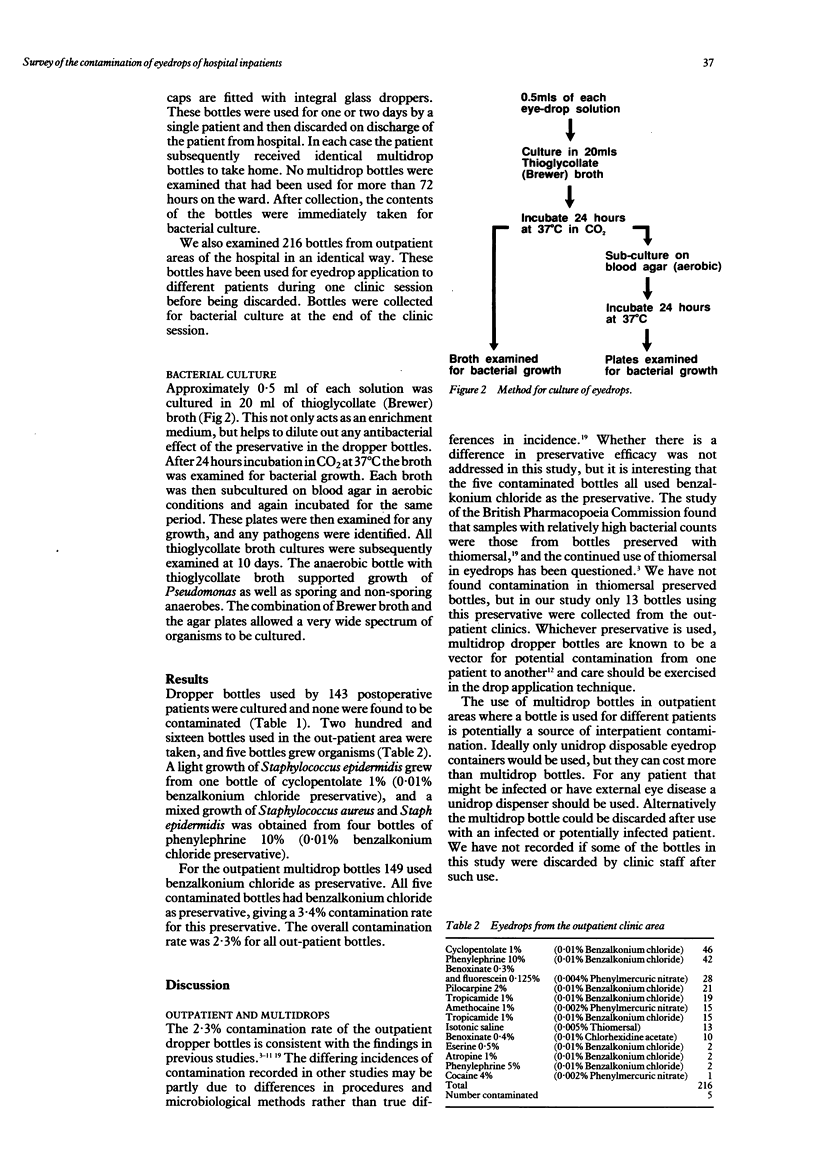Abstract
Topical ophthalmic medications used on the ward and from the outpatient area have been taken and cultured for potential bacterial contamination in the laboratory. We examined 143 bottles used by patients who had had routine cataract surgery and trabeculectomy. We also examined for bacterial contamination 216 bottles of eyedrops used in the outpatient area of the hospital. No contamination was found in the postoperative eyedrops, but five bottles were contaminated from the outpatient area (2.3%). The bacterial growth from outpatient drops was of the same order of magnitude as in previous studies. The practice in the UK for postoperative eyedrops to be discarded and fresh, separate bottles to take home is discussed. We recommend that this practice be changed so that the postoperative drops used for 72 hours or less are taken home.
Full text
PDF


Selected References
These references are in PubMed. This may not be the complete list of references from this article.
- Aslund B., Olson O. T., Sandell E. Studies on in-use microbial contamination of eye drops. Acta Pharm Suec. 1978;15(5):389–394. [PubMed] [Google Scholar]
- Aylward G. W., Wilson R. S. Contamination of dropper bottles with tear fluid in an ophthalmic outpatient clinic. Br Med J (Clin Res Ed) 1987 Jun 20;294(6587):1587–1587. doi: 10.1136/bmj.294.6587.1587. [DOI] [PMC free article] [PubMed] [Google Scholar]
- Coad C. T., Osato M. S., Wilhelmus K. R. Bacterial contamination of eyedrop dispensers. Am J Ophthalmol. 1984 Nov;98(5):548–551. doi: 10.1016/0002-9394(84)90238-1. [DOI] [PubMed] [Google Scholar]
- Ford J. L., Brown M. W., Hunt P. B. A note on the contamination of eye-drops following use by hospital out-patients. J Clin Hosp Pharm. 1985 Jun;10(2):203–209. doi: 10.1111/j.1365-2710.1985.tb01134.x. [DOI] [PubMed] [Google Scholar]
- Høvding G., Sjursen H. Bacterial contamination of drops and dropper tips of in-use multidose eye drop bottles. Acta Ophthalmol (Copenh) 1982 Apr;60(2):213–222. doi: 10.1111/j.1755-3768.1982.tb08375.x. [DOI] [PubMed] [Google Scholar]
- McIntyre D. J. More on contamination of solutions. Ophthalmic Surg. 1984 Jun;15(6):534–534. [PubMed] [Google Scholar]
- Olszewski Z., Michalewska J., Krutul H., Scimborska L. Wpływ dodatku środków konserwujacych na przezywalnoś szcepów staphylococcus aureus i Pseudomonas aeruginosa w kroplach ocznych z antybiothkami. Acta Pol Pharm. 1976;33(5):643–651. [PubMed] [Google Scholar]
- Schein O. D., Wasson P. J., Boruchoff S. A., Kenyon K. R. Microbial keratitis associated with contaminated ocular medications. Am J Ophthalmol. 1988 Apr 15;105(4):361–365. doi: 10.1016/0002-9394(88)90298-x. [DOI] [PubMed] [Google Scholar]
- Stewart H. L. Prolonged antibacterial activity of a fluorescein-anesthetic solution. Arch Ophthalmol. 1972 Oct;88(4):385–387. doi: 10.1001/archopht.1972.01000030387006. [DOI] [PubMed] [Google Scholar]
- Templeton W. C., 3rd, Eiferman R. A., Snyder J. W., Melo J. C., Raff M. J. Serratia keratitis transmitted by contaminated eyedroppers. Am J Ophthalmol. 1982 Jun;93(6):723–726. doi: 10.1016/0002-9394(82)90467-6. [DOI] [PubMed] [Google Scholar]
- Yolton D. P., German C. J. Fluress, fluorescein and benoxinate: recovery from bacterial contamination. J Am Optom Assoc. 1980 May;51(5):471–474. [PubMed] [Google Scholar]


